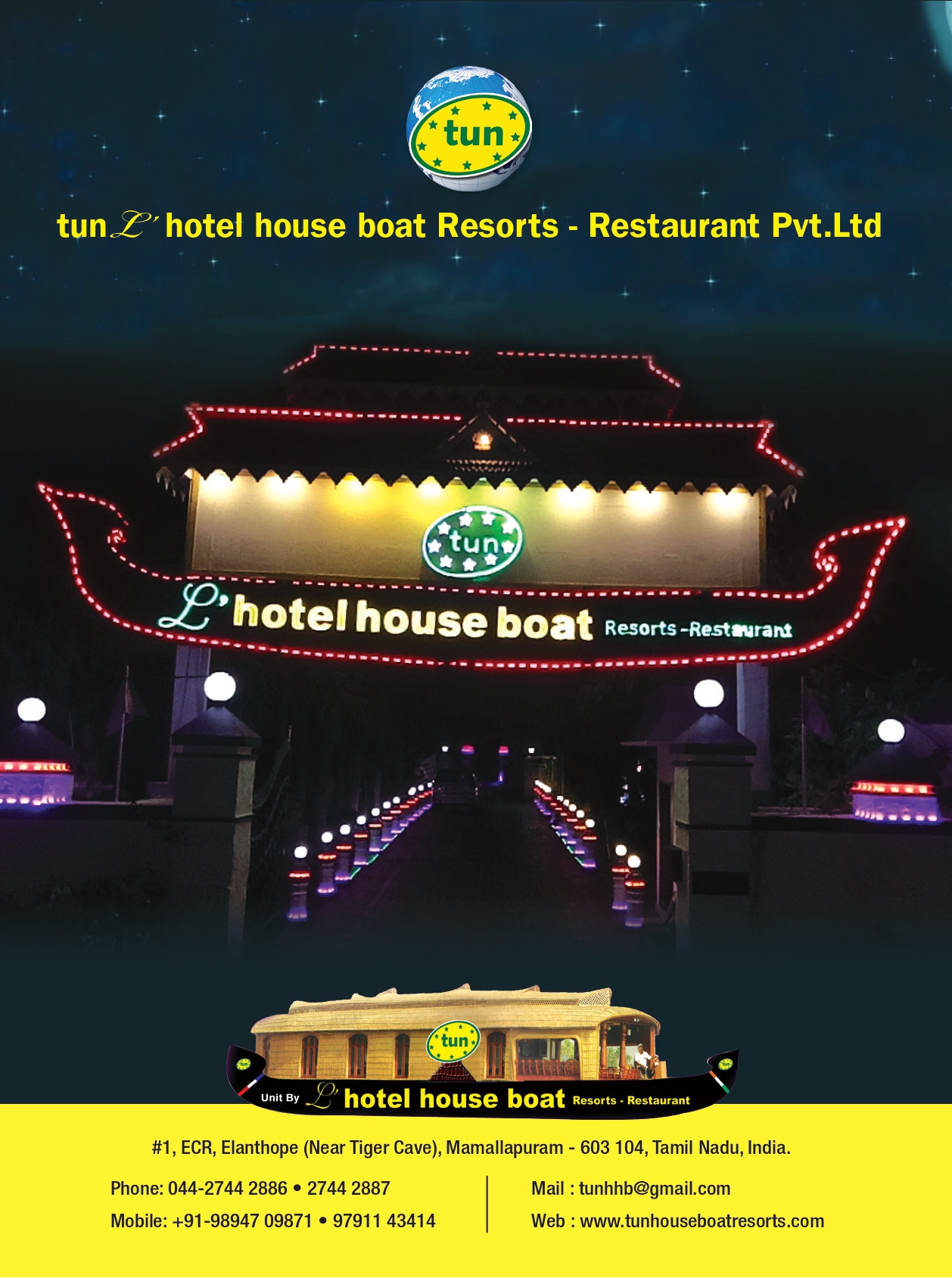Mamallapuram, popularly known as Mahabalipuram is named after the 7th century Pallava king Narasimha Varman I, Mammalan who was a great warrior and wrestler. It is a living testimony to the artistic temperament of the great Pallava kings who were trendsetters of the Dravidian architecture.
Classified as a UNESCO World Heritage Centre, Mahabalipuram boasts of various historic monuments built during the Pallava period between 7th and 9th centuries. A popular tourist destination on the outskirts of Chennai, Mahabalipuram attracts many tourists.
Located around 60 km south of Chennai, this architectural splendor along the coast of Bay of Bengal has withstood the ravages of time and the recent Tsunami. The rock-cut monolithic monuments are good examples of Dravidian architecture that also portray elements of Buddhist design. The cave temples, monolithic rathas or chariots, sculpted bas-reliefs are intrinsic to the architectural splendor here.
History of MahabalipuramAccording to historical facts, initially though the Pallava kings followed Jainism, after the conversion of King Mahendra Varman (600-630 AD) to Shaivism, the monuments related themselves mostly with Shiva and Vishnu. Most of the rock carvings and temples of Mahabalipuram are believed to have been built during the periods of Narasimha Varman I (630-668 AD) and Narasimha Varman II (700-728 AD).
The Shore Temple at MahabalipuramThe Shore Temple is considered the best of all the attractions here. The magnificently carved temple facing the sea has separate shrines for both Shiva and Vishnu in a reclining posture. This temple was built by Rajasimha in the 7th century and was ruined by the ocean waves. To prevent further erosions, a stone wall had been built.
Sculptures of Nandi, the heavenly bull line up the compound wall. It is believed that many monuments were buried under the sea over a period of time. The Archeological Survey of India (ASI) is still conducting excavations and surveys around this place.
Caves and bas-reliefs: Yet another attraction is the Krishna Mandapam, where one can see a huge bas-relief in which Lord Krishna is seen lifting the Govardhana hill on his finger tips to protect his people from Indra. Varaha cave is one among the rock-cut mandapams which is in finished state. The small stone hall houses two incarnations of Lord Vishnu - Varaha, the boar and Vamana, the dwarf. The four stone panels where the doorkeepers are on guard are noteworthy and they are masterpieces of art.Built around the same time, the Dharmaraja cave remains empty with three shrines. Around the sprawling area of around 8 sq. km, we see some of the monuments unfinished. The Mahishasuramardini cave which was built in mid-seventh century is known for its excellent bas-reliefs like the Somaskanda sculpture and Lord Vishnu in his omniscient repose. Goddess Durga's fight with the demon Mahishasura is depicted on the huge panel opposite to this. The mythological story of Goddess Durga's fight with the demon, form the basis of this beautiful panel.
Arjuna's Penance: The enormous bas-relief created on two huge boulders measuring 27 meters long and 9 meters high can be rated as the world's largest bas-relief. King Bhagiratha's efforts by way of penance to bring Ganges to the earth, is depicted here. The huge panel also houses forest life with animals and tribal people. We also see some humorous scenes like a cat doing penance in the same way as the ascetic.
The five Rathas or Chariots: On the southern extreme of Mahabalipuram, the five rathas commonly called the Pancha Pandava Rathas or chariots of the Pandavas stand majestically. They differ in style from the earlier rock-carved shore temples. The monolithic expressions of these rathas are in excellent state of preservation and the carvings are still as fresh as they were several years ago. Facing the west are the Arjuna and Draupadi rathas which are dedicated to Lord Shiva and Durga respectively. The Draupadi ratha has a single-storey with a thatch-like roof. The three-storey Darmaraja ratha, the largest of all the five rathas stands unfinished for reasons unknown.
Mahabalipuram Dance FestivalFor the connoisseurs of traditional dance, there is this dance festival celebrated every year in the month of January-February with the coincidence of Pongal, the harvest festival of Tamil Nadu. The shore temple forms the back drop for this dance festival. Artists from all over India come together to perform here their traditional dance form at this festival.
Mahabalipuram tourismThere are a number of hotels catering to both luxury and budget tourists. Drive along the scenic ECR - East Coast road to arrive at Mahabalipuram from Chennai. You can also drive down from Pondicherry and Kanchipuram. With its excellent location perched between the beach and a lagoon, Mahabalipuram provides relaxation as a hassle-free tourist spot.




